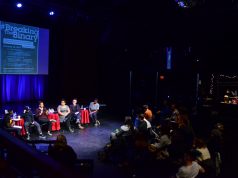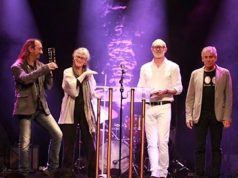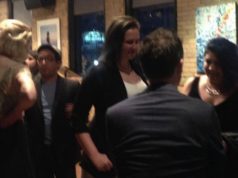In my June #cdncult article I asked: could the Toronto theatre community support one Syrian refuge family? Is there a more specific role we can play to create space for newcomers in our creative communities?
In the months that followed my last post regarding sponsoring a Syrian refugee family we have seen major changes both good and bad.
The bad: Hundreds of thousands of refugees continue to pour out of not only Syria but also Iraq, Afghanistan and other parts of Africa as conflicts in those areas continue unabated. Russia has now entered an already complicated Syrian conflict in a large intervention which may have also resulted in the targeting of Metrojet 9268 over Sinai. The ISIS attack on Paris has stoked both security fears and an inevitable (perhaps intentional) refugee backlash across the Western world. Germany is a final destination for many refuges and they have committed to settling near 800,000 over the next few years. This is a huge commitment by comparison to many nations, including our own. In some cases up to 10,000 people A DAY are trying to cross into Europe. Borders are being closed and the journeys to freedom become more desperate.
The good: Our newly elected government has made a commitment to bring 25,000 Syrian refuges to Canada by the end of December. Debate currently centres around a timetable for resettlement but it appears the government and citizens of Canada will rise to the challenge. The organization Lifeline Syria, has over 250 private groups that have committed to sponsoring a family and many more organizations and individuals are mobilized.
Many groups of artists have responded to this issue in Toronto in a number of different ways. I was approached by an artist who wanted to donate towards a sponsorship group as they were unable to sponsor themselves due to heavy work commitments. Another artist approached my family to see if we would consider joining their sponsorship group. Like-minded groups are popping up all over the country and fundraisers of all kinds have been announced and presented.
In speaking with a few people involved in sponsorship, it is a complicated process that involves not only a large financial commitment but also serious legal obligations. It is amazing to see people uniting by neighbourhood, workplace, religious or community group to sponsor these families. With the arrival of 25,000 people in the next few months there will be no doubt countless ways to help, from donating money, to cooking a meal, opening up our homes or sorting through winter clothes we can part with.
Moving forward, I think a step artists can take is to find out if we can connect with fellow artists who are refugees. As the child of two immigrants I know from my own family story, and the stories of so many others, that refugee and immigrant artists must often abandon their disciplines when they arrive in a new country. There is no avenue for them to make an income in their discipline and the main priority is ‘food on the table’.
Now that we as a nation are rising to the refugee challenge, and indeed many are participating in process from our artistic communities, is there a way that we could open the door to refugee artists to participate in our professional community?
Our next challenge by extension is to find a more inclusive approach to our art. Is it possible that we could create theatre, music, dance and visual art that could include refugee artists at the ground level? International collaboration is not new to the Canadian arts scene and we may now have more of those available to us now than a generation ago. Could we actively recruit and seek out fellow artists from this specific community after they have landed on our shores? Could we create pieces with the flexibility to include another language, culture, world-view, training, instruments and traditions?
As we all seek to break new boundaries and innovate with our work, the individuals or organizations that seize upon this would not only ‘help’ a fellow artist, but also have the chance to part of something revolutionary in Canadian “A”rt. Work that is alive, inclusive, original – who knows what that could become?
Creating a means by which we could reach out to the resettlement organizations and try to build a professional and folk artist database from the incoming group would be one way to do it. Building a small outreach organization, or finding a spot inside an existing one to allow interested refugees to find out more about how the Canadian system operates and what opportunities might be available to them, could be next. If we open the door now it may serve us well down the line instead of waiting a generation or more to include new artists in our creative process.
Feel free to leave comments here and look to this space again for updates on initiatives like this one.









